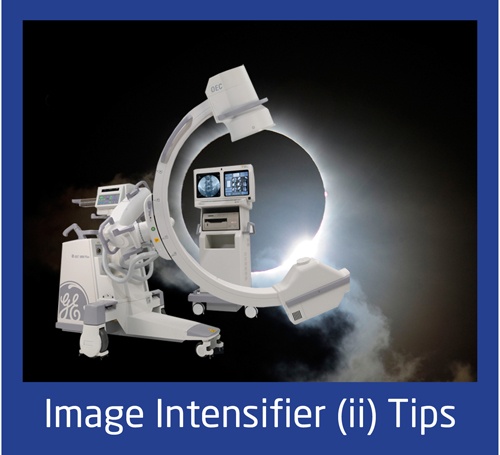If you have invested in medical imaging equipment, it goes without saying that you expect to make the most out of it by extending its lifespan; either for more use or better market value when you sell it. According to the American Hospital Association (AHA), the typical lifetime of an image intensifier is five years. However, it does not mean your image intensifier cannot go beyond this. You just need to learn the tell-tale signs of failure to look out for so as to optimize its lifespan. Here is all you need to know about your equipment, its lifetime, and failure indicators.
lifespan; either for more use or better market value when you sell it. According to the American Hospital Association (AHA), the typical lifetime of an image intensifier is five years. However, it does not mean your image intensifier cannot go beyond this. You just need to learn the tell-tale signs of failure to look out for so as to optimize its lifespan. Here is all you need to know about your equipment, its lifetime, and failure indicators.
Image Intensifier (II)
Mosby’s Medical Dictionary defines an image intensifier as “an electronic device used to produce a fluoroscopic image with a low radiation exposure.” X-ray beams passing through a patient are converted into electron patterns in a vacuum tube which are then accelerated and concentrated onto a small fluorescent screen. The brightened image is then displayed on a video monitor.
Clinical applications
- Dedicated screening room fixed piece of equipment
- Theatre mobile equipment
Components of an II system
- C-Arm (actual X-ray source & image intensifier host)
- Table
- Radiography exposure and program controls
- Viewing monitors
- Post processing software
How to tell when your Imaging Intensifier is failing
The layer of material that intercepts X-ray photons to turn them into visible light in an II is called phosphor. If you find that you increasingly need to use higher techniques to achieve the same image brightness, there are chances that your phosphor is failing. Phosphor reactivity decline is one sign of II equipment failure.
Also, you may start to notice sharp, dark spots on images; another negative sign. Such spots can come about from disintegration of an II’s insert or even dust and are referred to as physical artifacts. Once they begin to appear, you should clean the system or in some instances you will need parts replacement. Sometimes, a poor connection between components can result in digital artifacts which can be fixed by resetting the cables and boards. If this does not work, you will need to service/ replace them too.
Unresponsive potentiometers are a sign of failure in your II’s power supply. Known as ‘pots’, they are used to calibrate power supply to the Intensifier it is attached to. When adjustment responsiveness declines, you should look for a replacement immediately. Your Image Intensifier may produce no image at all as a result of power supply or other culprits.
Extending the life of your II
- Limit the amount of testing you do with an open field like blocking incoming X-rays with a piece of lead.
- Employ proper collimation. That is, limiting X-rays to relevant scan areas.
- Do an annual preventive maintenance (PM) test on batteries, cables, brakes, mechanical assembly, dose & image quality calibration, etc.
- Plug in your II when not in use to maintain batteries and generators.
- Do regular cleaning
- Use drapes to prevent contrast media in the system like moisture and biohazards which are not electronic or human friendly.
- Adjust your sleep mode settings to prevent monitor burning.
When your Image Intensifier finally gives in
As much as you would not wish for this to happen, every II eventually needs replacement. It is better to be prepared in advance by ensuring that you are in the records of certain vendors to reduce turnaround ordering time.
Conclusion
Medical imaging equipment is expensive to acquire or replace which is the major reason for the growth of the refurbished, used, or pre-owned medical imaging equipment market in the U.S. If you need more information on Mammography, CT Scanners, X-Ray, C-Arms, MRI, and PET/CT equipment, Atlantis Worldwide is here to work with you. Please contact us today!
Some blogs you may have missed:
- Top 7 C-Arms for Your Orthopedic Practice
- Room -Size Does Matter When Purchasing a C-Arm
- Don’t Assume When You Buy A C-Arm Online
- Philips C-Arm Manufacturer Spotlight
- C-Arms - The Perfect Tool for Veterinarian
Meet the author: Alex Silbergleit





